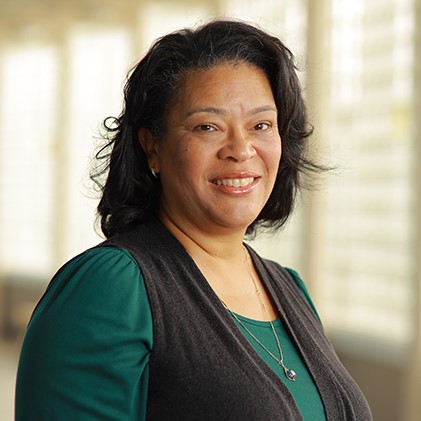The National Science Foundation has awarded grant funding to Purdue Polytechnic’s Anne Lucietto, associate professor in the School of Engineering Technology with a specialty in understanding student experience.
The award of nearly $300,000 goes to Lucietto’s collaborative research project, which seeks to understand “why Black students choose engineering technology or engineering.” The project’s design is meant to explore a statistical imbalance, in which Black students disproportionately pursue degrees in engineering technology compared with other students exploring different fields within engineering.

Lucietto and co-lead Lesley Berhan, associate professor and associate dean in the University of Toldeo’s College of Engineering, assembled a diverse team of co-investigators to work on this endeavor, including Purdue’s Virginia Womack (director of the Minority Engineering Program) and Toledo faculty members Revathy Kumar (educational psychologist) and Monita Mungo (associate professor of sociology).
Lucietto’s own understanding of diversity among engineers stretches back to her experience as one of a small handful of women in many workplaces and classrooms. When it comes to women engineers in the typical classroom, Lucietto said “when I first went to school for engineering, it was pretty much me, myself and I.”
After her experiences as an engineer in locales from Chicago to Japan to Fermilab – and being one of few or almost no women in each place – Lucietto empathizes with the unfair burdens that can be placed on students, even before they enter an academic program.
“We should be trying to stop a backslide in educational attainment. Especially if there turns out to be a racial divide in this, a very worrying component is that it may come down to a sense of financial insecurity that has a greater effect [on minority students,]” Lucietto said.
“And if these students feel like they can’t get any more financial aid, their families can’t give them money and if they can’t apply for a loan, then there are all these issues affecting the educational choices students make for themselves.”

Berhan stated that these circumstances are “especially true for African American students. … Issues of academic preparation and access to advanced math and science coursework in high school, the ability to transfer from a two-year to a four-year institution and accessibility issues such as being able to enroll in part-time, evening or online classes also factor heavily into the decision.”
The grant’s abstract mentions specific issues that the team will try to create new data on, in order to have a better sense of how heavily different factors contribute to the disparity of Black students in engineering technology (ET). These issues include:
- What role do high school counselors, college counselors/recruiters, and faculty play in Black students’ choice of ET versus engineering?
- What are the academic and structural barriers that effect Black students’ admittance to engineering?
- What are the structural barriers and affordances that enable or prevent Black students to transfer from ET to engineering (and vice versa) from during an undergraduate program?
- How do Black ET students perceive their future career opportunities?
- To what extent do Black ET students identify with the Engineering and/or ET domain and how is this related to contextual salience of stereotype threat and belongingness to the program?
- How do students’ perceptions of their experiences in ET and the interpretation of these experiences relate to their self-schemas including their expectations of success, personal, cultural, and professional identities, and their career goals?
The team is currently in the drafting phase of the project. “We’ll start with focus groups of relevant student populations, which we’re preparing the questions for at the moment,” Lucietto said. “That will function as our initial data set to see if we can drill down on more specifics to ask a wider survey of the student population in engineering and engineering technology. Once we have that data, it will serve as a guidepost for that bigger conversation down the line.”
Additional information
- NSF Awards UToledo Faculty Grant for Researching Black Students’ Choice of Engineering Major (University of Toledo news)
- Gateway or Gatekeeper: Why Black Students Choose Engineering Technology or Engineering, and the Implications of this Choice (NSF Grant)
- 12 Polytechnic professors receive promotions (Polytechnic newsroom)
- Live Q&A – Engineering Technology – Feb. 15, 2022 (Purdue Polytechnic)
